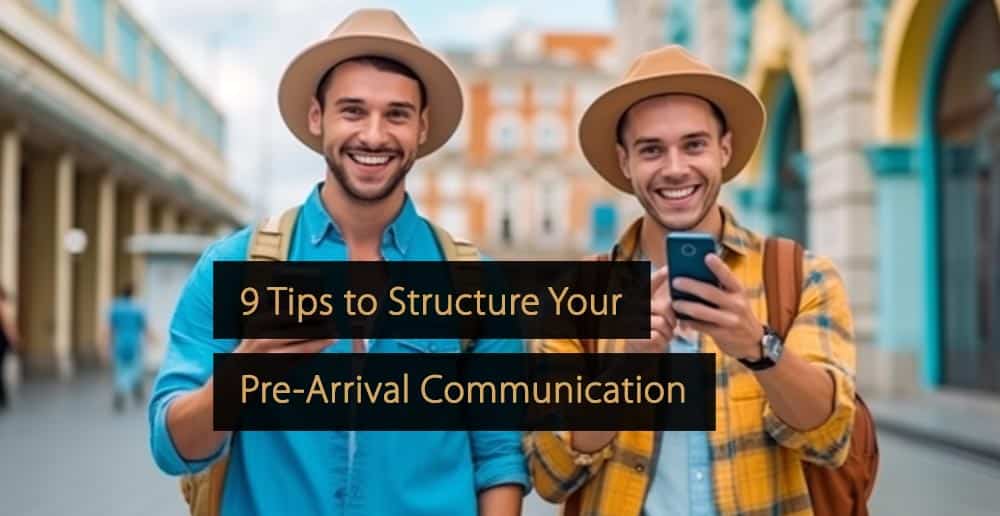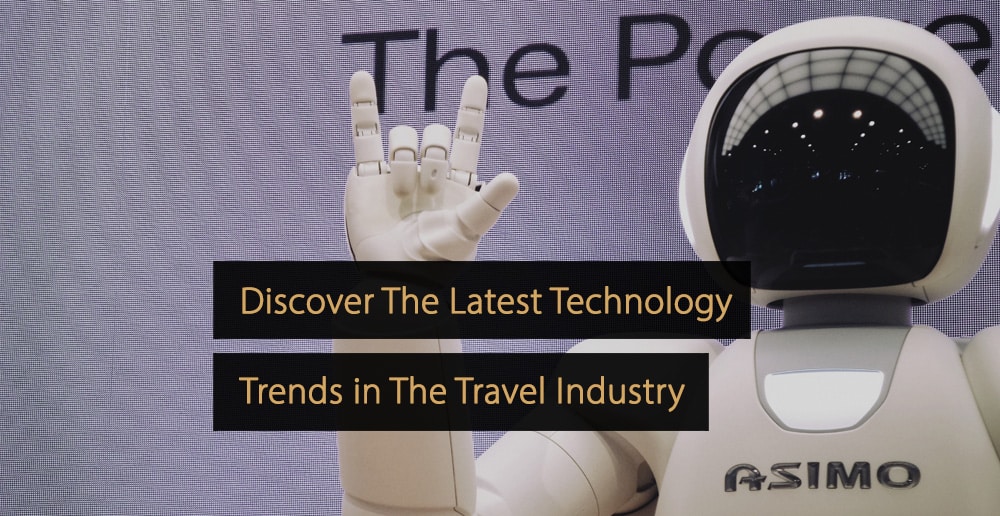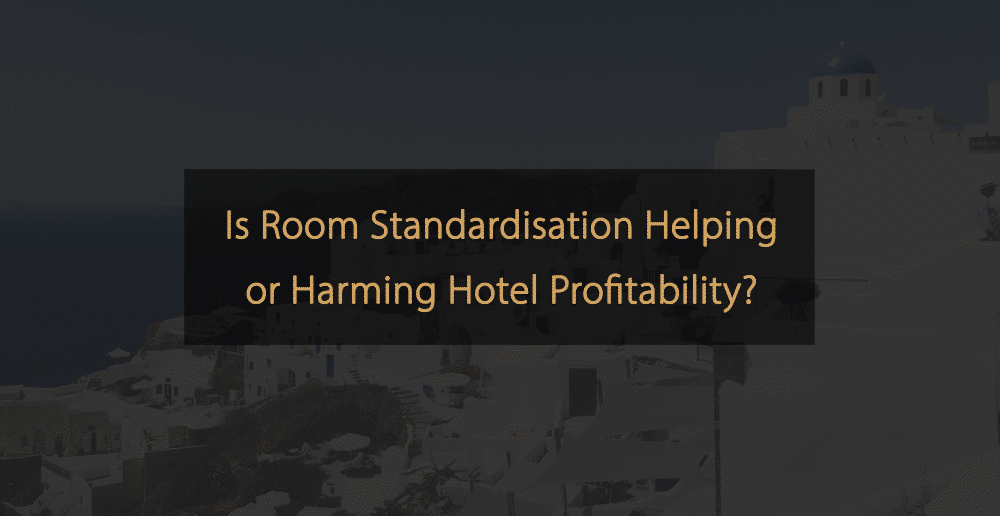As a hotelier, it is important to prioritize pre-arrival communication with your guests. This is the time when you can set the tone for their entire stay, ensuring that they feel welcome and valued from the moment they book with you.
Why Is Pre-Arrival Communication Important for Hotels?
Pre-arrival communication is all about creating a positive first impression and setting the stage for a memorable experience. You can make your guests feel excited about arriving at your property.
On the other hand, pre-arrival guest communication can help you anticipate and address any concerns or issues your guests may have, making their stay as smooth and enjoyable as possible.
Did you know that more than 85% of customers want to experience proactive communication and contact from a business? This statistic highlights just how important it is to engage with your guests before they even arrive at your hotel.
This means that by communicating with your guests the right way before they arrive at your hotel, you can turn them into loyal customers who will return time and time again.
9 Tips for Your Pre-Arrival Communication with Your Guests
Below, you will find nine tips for your pre-arrival communication with your guests.
1. Choose the Right Time
If you want your communication to be successful, you need to choose the right time to send them. There are two ways hotels go about this: either they send lots of information as soon as the reservation is made or they send everything one or two days before the check-in date.
Both ways are missing the timing element.
Sending all information as soon as the reservation is made will only overwhelm them, and sending it too close to the trip date will do it, too.
If you want to send valuable information that will help them plan their trip, sending it out at least one week before the arrival date is ideal. However, if the message is more related to upselling, three to four days before the trip begins is the best time to send it. Why? Because they are in the packing process, already excited about the trip, and they are more prone to consider offers.
2. Be Personal – Forget about Generic Messages
Personalization nowadays goes beyond addressing your guests by their names. By looking into your guest data, you will be able to find information about your guests’ preferences, origins, languages, generations, and more.
From your guest data, you can also keep track of the times they visit your hotel and the services they buy. All of this information is key for your communications as it allows you to segment your guests and personalize your messages.
Check out these 9 audience segments you can create to send hyper-personalized messages.
3. Opt for Value-Led Communication
Pre-stay communication is not just about selling. You need to make your messages be valuable to your guests, so they don’t perceive them as irrelevant. To accomplish this, use the value-led principle: Is this adding any value to the guest’s experience?
For example, share information about means of transportation to help guests reach the hotel faster and without problems. You can tell them about the local events around your property and the most famous attractions in your area.
You can go one step further and personalize those recommendations based on their profiles. For couples, romantic recommendations; for families, attractions suitable for children, and so on. This might seem like a lot of work, but if you have a good hotel CRM in place, this will take only a few minutes to set up.
This will not only lower their customer effort as they will have useful information that will make their experience easier, but it’s also a great way to showcase your knowledge of the area and build trust with your guests.
4. Do Upselling in the Right Way
Give your guests the opportunity to upgrade their rooms or add additional services to their reservations. This not only provides them with a more personalised experience, but it also helps increase your revenue.
However, be mindful about how you do the offering. If you expect guests to pay for extra services, you need to highlight the characteristics of those services and why they are worth the extra cost. Of course, you should use pictures that show how attractive they are.
Using generic pictures and messages will only leave guests asking, “Is this what I’m supposed to pay 20 extra euros for?”
On the other hand, remember to always stick to the services that are relevant to them. Don’t offer a couple’s massage to a business or solo traveler! You can look into your guest data to find their booking details and see what services make more sense to offer that specific guest.
5. Make Check-In Easy
Share check-in instructions and offer early check-in or luggage storage services to make the guest’s arrival as smooth as possible. This helps set the tone for their stay and shows that you’re willing to go above and beyond to provide excellent service.
Free up the hassle of checking in at their point of arrival. Instead, ask them to use digital check-in to reduce their wait time when they arrive. This can also free hotel staff to focus on other valuable tasks and increase work efficiency.
6. Highlight Hotel Services
Remind guests about the hotel amenities included in their reservation, such as the pool or gym. This is a great way to promote your hotel and encourage guests to take advantage of the services you offer.
Exceed your guests’ expectations by telling them what will they be getting in their room price, to ensure they are getting value for money. Do not exaggerate when you tell them about the services included, so when they arrive you live up to their expected image.
7. Choose the Right Channel for Every Message
With so many channels of communication available, it can be challenging to determine which ones to use. The key to successful pre-arrival communication is to be multi-channel.
Some guests will read emails, while others prefer instant messaging apps like WhatsApp. The main point is that guests have different preferences, and by offering a variety of communication channels, you give them the flexibility to choose the method that best suits them.
The reality is that not all messages belong to an email. If it’s a more time-sensitive message, like a reminder to check-in or the wifi password, using instant messaging channels like SMS or WhatsApp is more recommended.
On the other hand, if it’s a more official communication like a booking confirmation, email will always be king. And the same goes for longer messages.
Read also: 6 tips to fix your hotel’s email marketing
8. Leverage Automation to Ensure Timely Efforts
Pre-stay communication is all about reaching guests with the right message at the right time and on the right channel. And doing this manually for all your guests is a titanic task.
Your team will be overwhelmed and personalisation won’t be as good as it could be, resulting in messages that don’t have the desired effect on guests.
The solution? Technology. Nowadays, many systems can help you automate this process, the leading example being a hospitality customer relationship management system (CRM).
With Bookboost, for example, you can create all the campaigns, and select triggers that will ensure that the message is sent at the right time: At the moment of booking, three days before check-in, on the arrival day, one day after check-out, and more.
The best part is that your team won’t have to spend hours personalizing and sending messages to guests, leaving space for face-to-face interactions and other important projects.
Read more here about other touchpoints you can automate to create a seamless guest experience.
9. Use Pre-Arrival Communication to Anticipate Concerns
If there are any potential issues that could impact your guests’ stay, such as construction nearby or a busy holiday weekend, pre-arrival communication can help you proactively address these concerns and minimize any disruptions.
How to Reach OTA Guests during Pre-Arrival?
Guests who book through OTAs can be hard to reach. The main point is that you need access to their real information. How to get it?
You can send a campaign to the temporary email that OTAs create for these guests and offer them access to a special offer by updating their contact details. For example, a free drink in the bar or a discount on the breakfast.
In other cases, it is enough for people to know that they need to provide their contact details in case of any last-minute communication or changes.
You can try many different approaches and decide which ones works best for your property, but the bottom line is that you need to recover the information to build a relationship with your guests. And the best moment to do it is during the pre-arrival stage, using all the tips in this article.
Final reminder, you don’t need to send all messages to the same guests. You don’t want to overwhelm them. Choose the wants that fit your property and your guests, and use them wisely.
Free Whitepaper: How Customer Data Platforms (CDPs) Impact Hotel Operations & Results
In this whitepaper, you’ll learn how a Customer Data Platform (CDP) can transform hotels’ operations, engage with guests, and drive long-term success, whether managing a boutique hotel or a large chain.
Click here to download the whitepaper “How Customer Data Platforms (CDPs) Impact Hotel Operations & Results“.
More Tips to Grow Your Business
Revfine.com is the leading knowledge platform for the hospitality and travel industry. Professionals use our insights, strategies, and actionable tips to get inspired, optimize revenue, innovate processes, and improve customer experience.Explore expert advice on management, marketing, revenue management, operations, software, and technology in our dedicated Hotel, Hospitality, and Travel & Tourism categories.








Leave A Comment